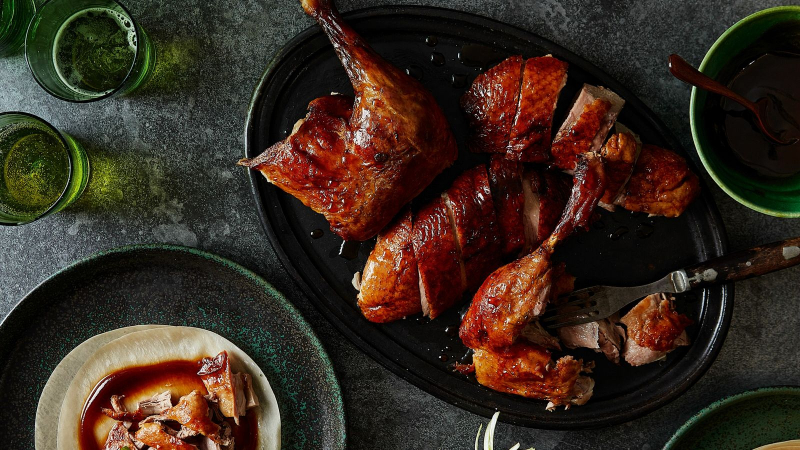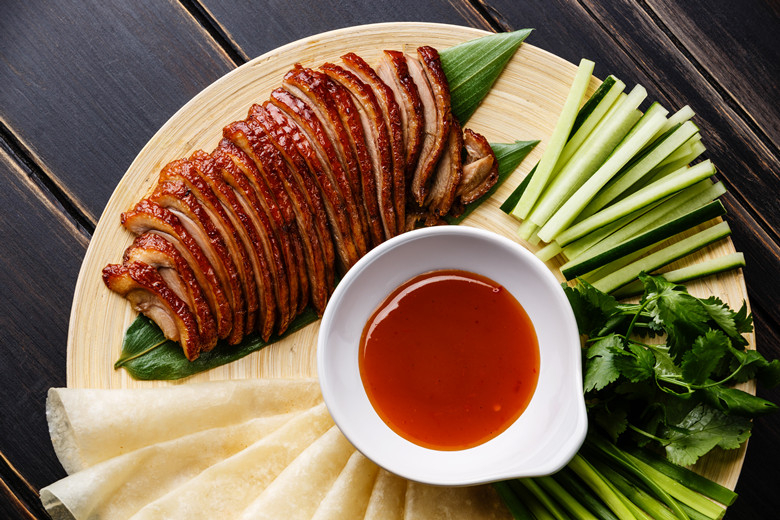Peking Duck
Peking duck has a long history, but it has also been important to Chinese international affairs in the 20th and 21st centuries. This well-known Chinese meal has been served to politicians and diplomats like Henry Kissinger, Richard Nixon, and Fidel Castro. During the Yuan Dynasty, when China was still an imperial state, peking duck was fed to the Chinese Emperor. Duck is sliced thinly and has a crunchy, crunchy exterior in this dish. Typically, pancakes, bean sauce, onions, and cucumbers are served with peking duck.
Due to its intricate and drawn-out preparation, Peking duck still has regal associations today. White-feathered ducks are first grown for 45 days in a free-range setting before being force-fed for 15 to 20 days. Air is pushed under the skin after the animal has been killed, gutted, cleaned, and cooked to help the skin split from the fat. The duck is then covered in maltose syrup and allowed to dry to further crisp up the skin. It is a dish made up of numerous components, including thin pancakes, a savory sauce, some julienned veggies, and sliced pieces of roast duck with crispy skin and tender meat. A roll made of these components is prepared for consumption.
It's interesting to note that, although being named after Beijing ('Peking' is an older spelling), Peking duck actually has its roots in Nanjing, the historic capital of China, which is located in the eastern province of Jiangsu. The imperial court relocated to Beijing during the Ming dynasty, bringing roasted duck with them. Peking duck was already a standard item on imperial menus by that time. Peking duck gained popularity among the gentry during the Qing era, where it was highly lauded in academic and poetic writings.









